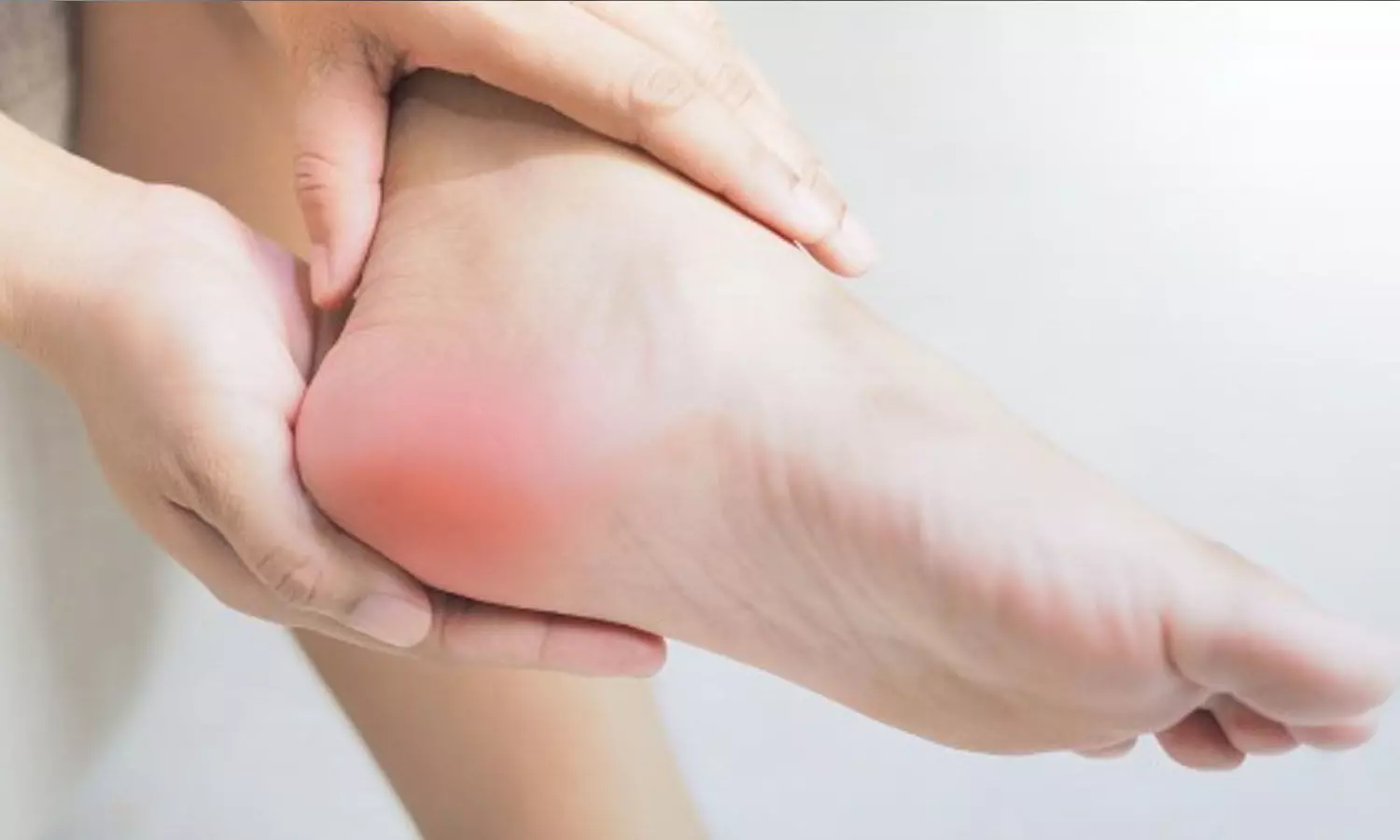Plantar fasciitis: Heal your heel pain
One of the most common causes of heel pain is plantar fasciitis

One of the most common causes of heel pain is plantar fasciitis. Plantar fascia is a thick band of fibrous tissue that runs on the bottom of the foot from the heel to the toes and supports the arch of the foot and can act as a shock absorber of the foot. A spur or bony overgrowth arising from the heel bone (calcaneum) can irritate the plantar fascia. Over a period of time, this can cause inflammation of the plantar fascia or even tear of the fascia. Irritation or inflammation or tear of plantar fascia can result in plantar fasciitis (“itis” means- inflammation).
How does it manifest?
Plantar fasciitis can be caused by a number of factors, including ill-fitting shoes, foot anatomy, overuse, and walking on hard surfaces. Plantar fascia manifests as a sharp stabbing pain usually experienced in the early morning with the first few steps. Pain can get better with movement, but can get worse with continued standing or standing up after prolonged sitting or sleeping.
Who can have plantar fascia?
Commonly seen in people ages 40-60 years of age. Reasons for plantar fasciitis (inflammation of the plantar fascia) is unknown, however, seen commonly in long distance/ regular runners, athletes, dancers (particularly ballet dancers, aerobic dancers). Also, professions involving prolonged walking, standing on hard surfaces can also be prone to plantar fasciitis. Continued or repeated stretching can result in small tearing, irritation or inflammation of the plantar fascia.
What happens with plantar fasciitis?
Plantar fasciitis can result in prolonged/chronic heel pain and can cause difficulty carrying our regular daily activities. Changing the gait and avoiding bearing weight on the heel can result in patients walking in a way that can result in foot, knee, hip or knee pain.
How is it diagnosed?
Plantar fasciitis is diagnosed by clinical history and physical examination. Depending on where the patient is hurting the most, the clinician can come to a diagnosis. No tests are usually required. However, if there is history of injury, the physician might order an X-ray or MRI to rule out other causes of pain such as a stress fracture. Sometimes, pain can be due to other causes such as wearing ill-fitting shoes, wearing high pointed heels. Other causes can include irritation of the muscle that attach to the heel bone. However, these can be diagnosed clinically.
X-Rays can show the bony overgrowth or spur growing from the heel bone, which is usually the culprit for the pain, irritation and inflammation. However, not every patient who has a heel spur has heel pain.
MRI (Magnetic Resonance Imaging) can also show the spur and also shows other signs of plantar fasciitis such as thickening of the band of tissue or inflammatory signs around the plantar fascia. MRI can also used to tell if there are any tears in the plantar fascia.
In advanced/severe cases, the spur and/ or the plantar fascia can also cause mass effect on an adjacent nerve and can cause changes in the muscles of the foot and decreased or altered sensation in the heel.
Ultrasound can also be used to assess the integrity of the plantar fascia and can detect if there are any tears in the fascia. Additionally it can also be used to assess the thickness of the plantar fascia, which is an important imaging criterion to diagnose plantar fasciitis on imaging, along with other inflammatory signs.
How is plantar fasciitis treated?
Most patients with symptoms of plantar fasciitis recover after several months of conservative therapy. Icing the affected area, gentle stretching and using soft, yet firm and supportive footwear can help most patients.
Medications:
Pain can be addressed by medicines such as Ibuprofen, or Naproxen to alleviate pain and inflammation form plantar fasciitis. However, it is always advisable to speak to a doctor before starting any medications. Additionally, pain medications are not advisable for long-term use in any patient and used with caution in patients with stomach (gastric or duodenal) ulcers or gastritis.
Conservative treatments:
Physical therapy can help with the pain resulting from plantar fasciitis. Gentle stretches, and exercises to strengthen the lower leg muscles can help with the pain. Other conservative management includes taping or splinting the heel and a muscle (Achilles tendon) in the back of the lower calf, so it can help with stretching during sleep. Custom fit orthotics for arch support to help distribute the pressure on the feet more evenly can also be beneficial.
Intervention:
Injection of a steroid medicine under ultrasound guidance in the area of pain has helped many patients. However, repeated injections are not recommended due to a risk of tear of plantar fascia. In few patients, injection of platelet rich plasma (liquid part of your own blood) can be separated and injected under ultrasound guidance and can promote healing of the fascia.
Shock-wave therapy:
Although, not many promising results have been consistently seen with this method of treatment, sound waves, directed to the area of pain, can promote healing in patients with chronic plantar fasciitis, that has not responded to other forms of treatment.
Surgery:
In some patients, not responding to any of the conservative treatments, and continue to have severe pain, can undergo surgery as a last resort. It is day-time outpatient surgery, done with a small incision (cut) on the skin and performed under local anesthesia.
Life-style modifications:
Obesity: Overweight or excess weight can add stress to the plantar fascia, therefore, having weight with normal BMI can help.
Footwear: Preventing high-heeled shoes are advisable. Low to moderate heels is okay to wear. Having thick soles, good arch support and extra cushioning can help with pain. Try to avoid walking on hard/ flat footwear or walking barefoot. Replace shoes before they wear out and stop providing support and cushion to the feet. Switching to shoes that can provide more arch support, or trying heel cups, or other orthotics can provide cushion to the heel.
Activity: Instead of long distance running or jogging, switching to swimming or cycling can be helpful.
Icing: Icing the area of pain/ inflammation for some time 3-4 times a day can help reduce pain and / or inflammation. Rolling your foot on a cold water bottle or ice cubes can also help some patients.



